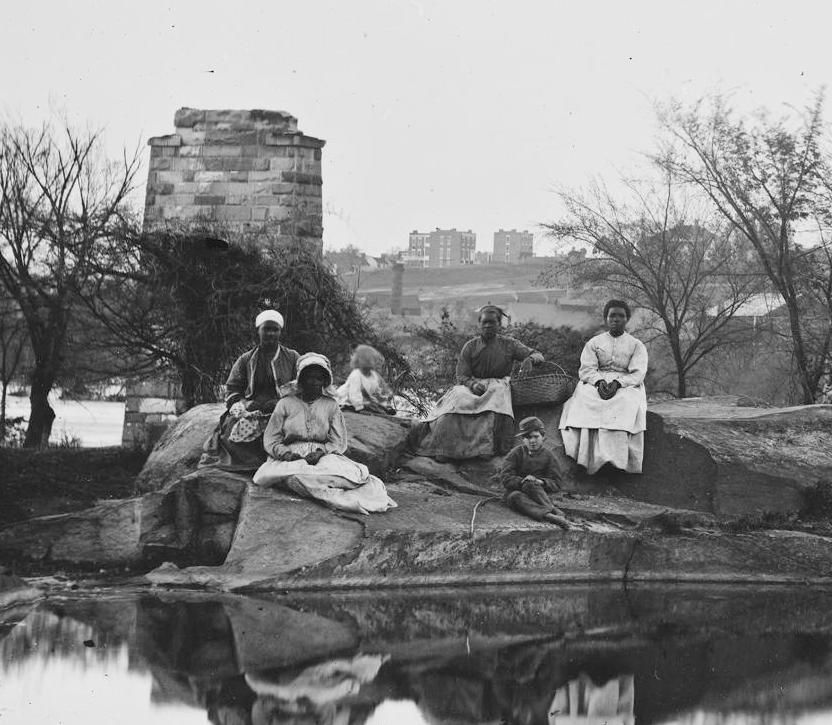
Race Relations at the Time of Liberation

Figure 1.-- Photograohers flocked to Richmond after the fall of the Confederate capital. Alexander Gardener took this photograph (April 1865). The ruins of the Richmond & Petersburg Railroad bridgeover the James River is in the background. The railway played a key role in the Condederate defense of Petersburg am Richmomd. The Confederates burned the bridge as Richmond was about to fall. Notice the view of Richmond n the background. Most of the city was largely untouched by the fires that swept some areas. Most of the fires like burning the bridge here were set by the retreating Confederates. Notice the picnic scene here. Four black women, almost certainly just freed slaves. They have with them a white boy wearing a Confederate kepi. We are not sure about the race of the little girl because she moved her head. What is interesting is the little boy's mother felt enough confidence in the ladies that the boy was alloed to go on the picnic with them. This is a scene that you would be unlikely to see tody, a little white boy going on a picnic with four Afro-American women. Source: Library of Congress. LC-DIG-cwpb-00388.
|
|
Race relations at the time of the Civil War are commonly viewed through the prisim of our modern relationships and the picture of slavery painted by abolitionists. This is often at odds with the picture pained by thevLost Caue view, prominently depicted in Margaret Mitchell's 'Gone with the Wind'. While the the Lost Cause historians largely depicted a false narative of the civil War and slavery, Mitchel's novel did capture a too often neglected aspect of the relationship between slaves and their owners. It was an unequal relationship and all too often it was a flaed relationship, but there was a relationship and in some cases one of respect and trust. However flawed the relationships in the South, in the North there were often no relarionships between blacks and whites. This would become afactor acenuryboatr during the Civil Rights movement. This is hard to follow in written dicumnts. Few slaves were literate and few whites set such matters down in writing. An unfortunately small numbers of photographic can through photo forensics provide taunrelizing clues into this little reported subject. These relationships were to be twistd by white resistance to black rights and ondividuals like Nathan Bedford Forest and the Ku Klux Klan. It makes us wonder if the tragic failure of Reconstructiin coukd have had a different outcome. If Lincoln had been in the White House rather than Johnson, one wonders what could have been accomplished.
CIH -- Civil War

Navigate the CIH Civil War Pages:
[Return to Main Civil War freed blacks age]
[Return to Main American slavery page]
[Return to Main Civil War page]
[Biographies]
[Campaign]
[Causes]
[Emancipation]
[Families and youth]
[Fiscal policy]
[Formations and units]
[Law]
[Railroads]
[Reconstruction]
[Slavery]
[Soldiers]
[Uniforms]
[Weaponry]
[Reconstruction]
[Lost Cause]
[Jim Crow]
[Civil Rights movement]
[Return to CIH Home page]
Created: 1:38 AM 3/31/2015
Last updated: 1:39 AM 3/31/2015



